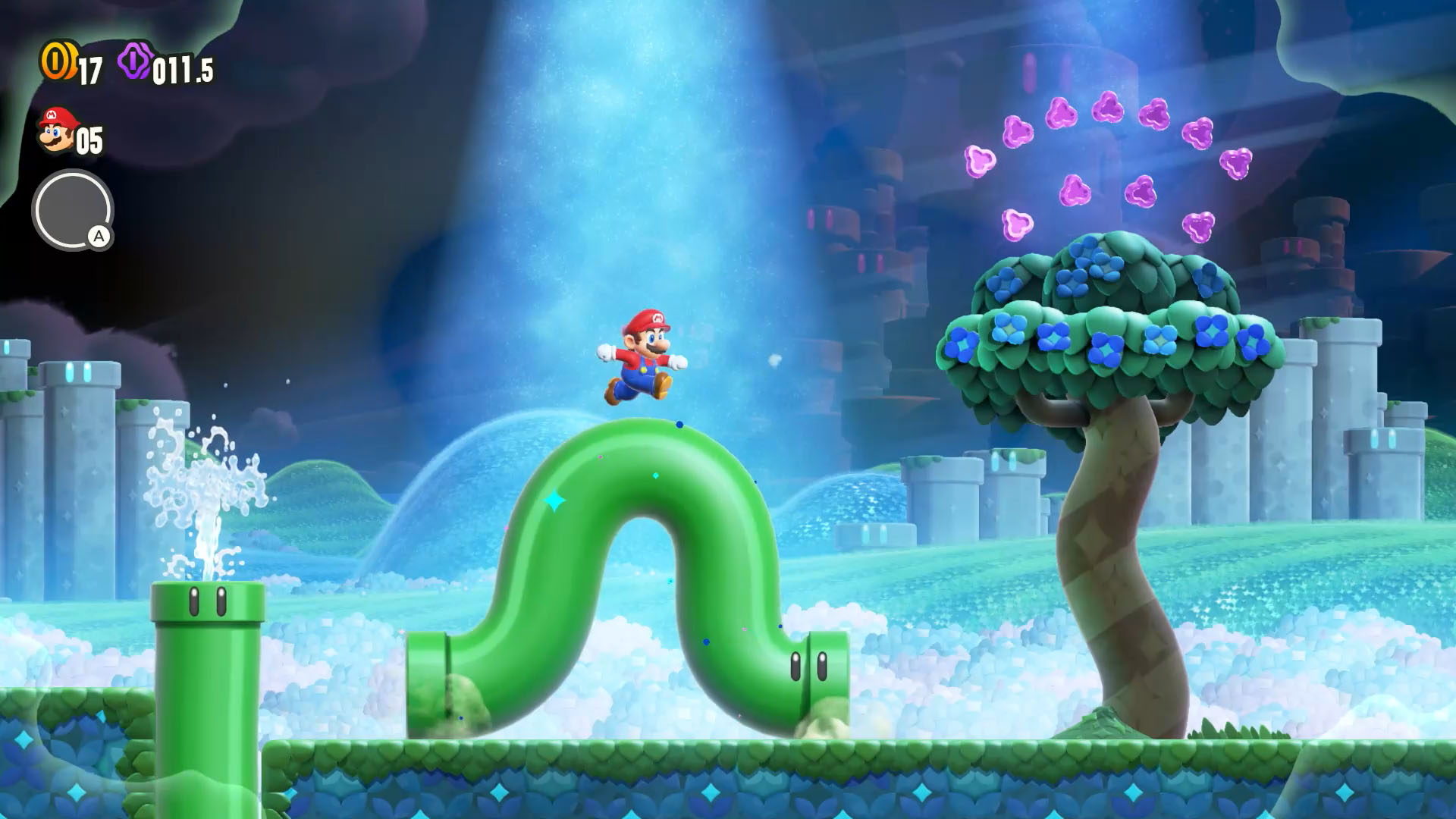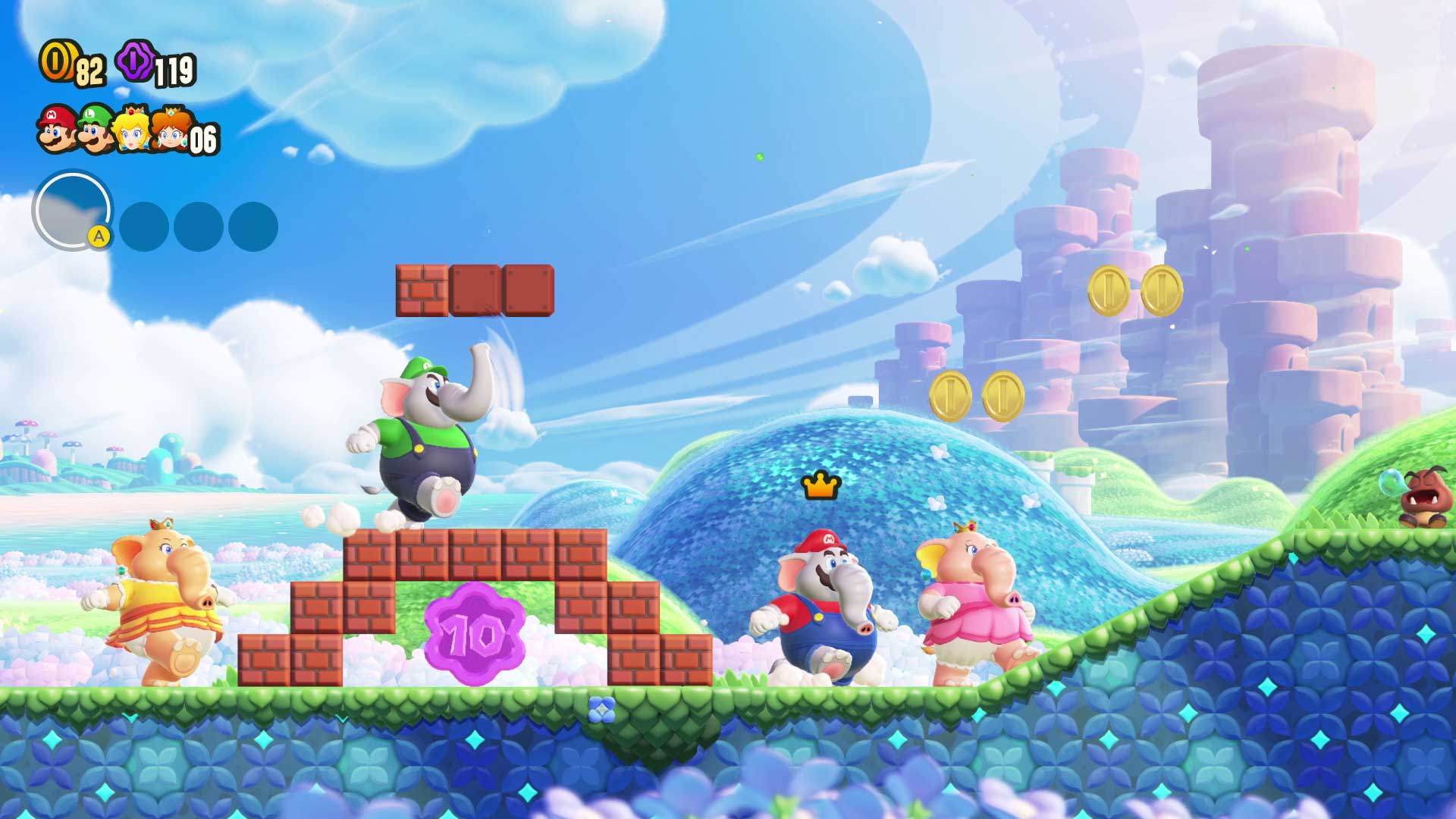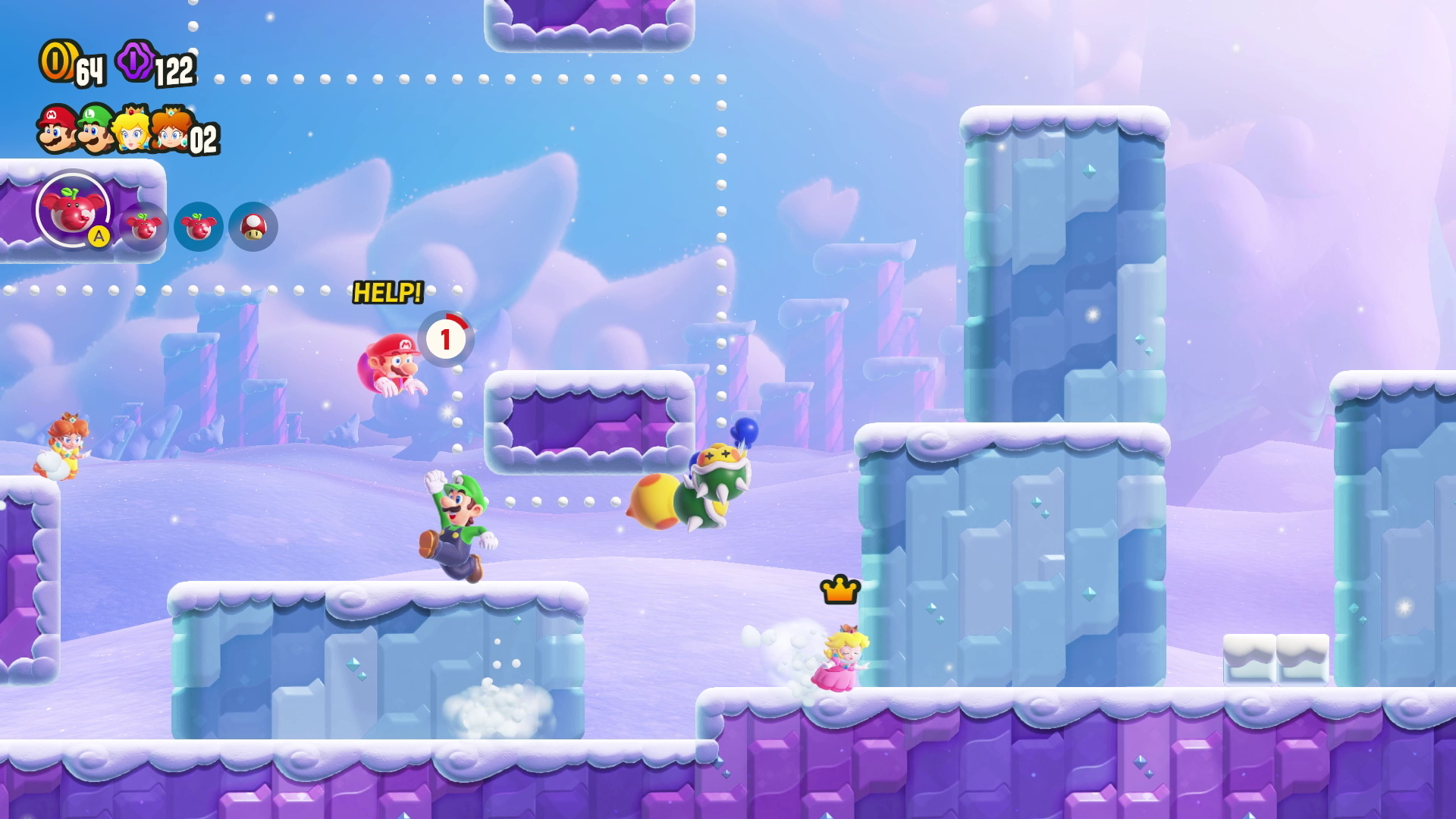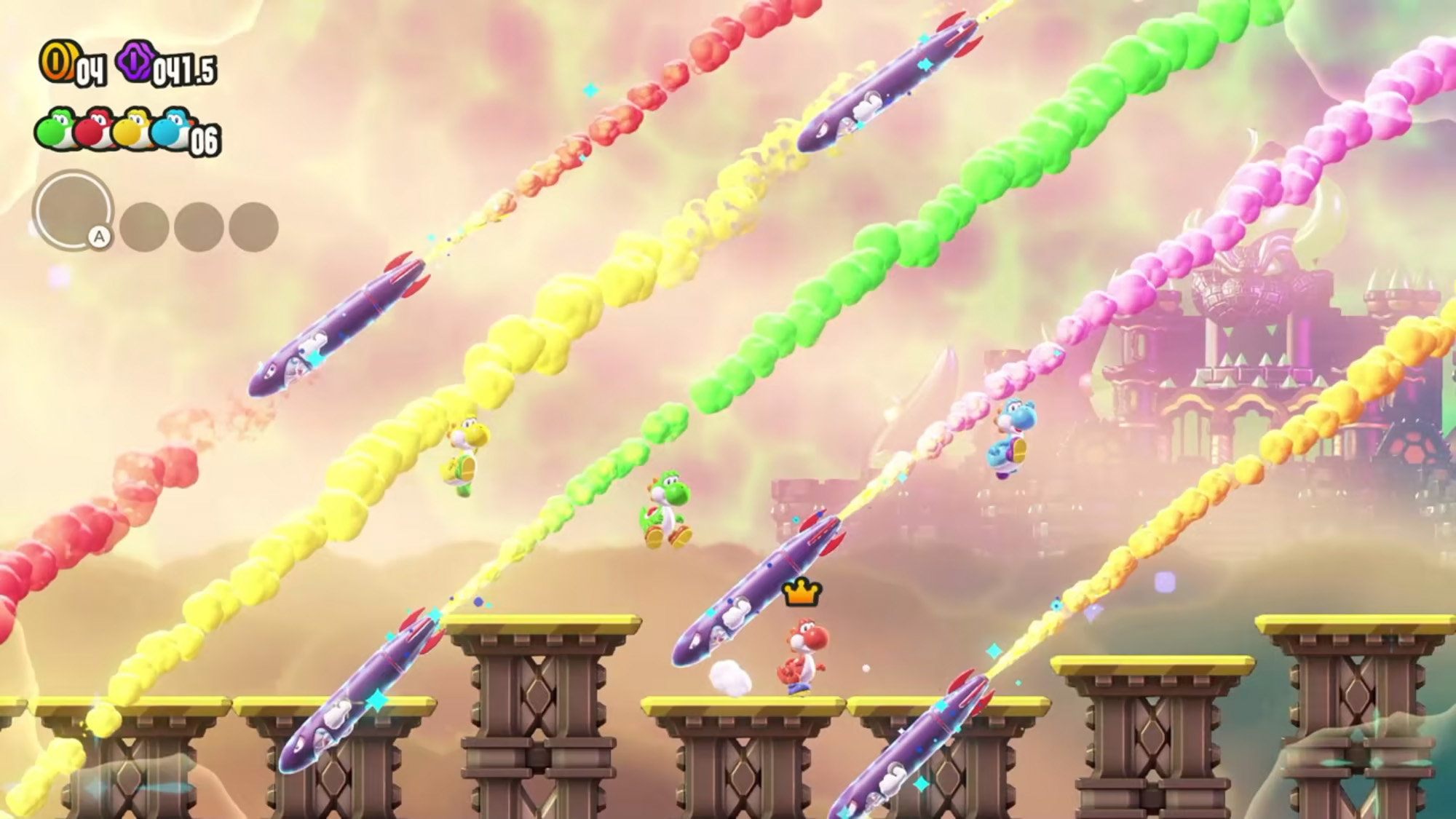
With 2023 being such a big year for games, I’ll confess that Super Mario Bros. Wonder just hasn’t been on my radar.
Sure, I thought it was hilarious to see Elephant Mario in the reveal trailer, but otherwise, I’ve never really been a 2D Mario guy. Instead, I’ve gravitated more towards the 3D titles, with 3D World being the last one that fully got its hooks into me, albeit with the help of some friends.
Having said that, Super Mario Bros. Wonder might be some of the most pure fun I’ve had in a game all year. During a roughly one-hour hands-on preview in New York this month, I got to sample several of the 2D platformer’s levels and additional multiplayer content, and I’ve come away enamoured with the experience.
On a base level, it’s mechanically similar to previous 2D games. You’ll run, jump, crouch, and use various power-ups to avoid enemies and hazards and reach a flag at the end of the level. But it’s how Nintendo has flipped the script on everything that happens in between the beginnings and ends of each stage that makes all the difference.
Enter the Wonder Flowers, which drastically transform the stages with astounding — and often bizarre — effects. For example, an early stage makes the traditionally stationary Warp Pipes spring to life, bobbing up and down, spraying water platforms, and even shimmying around like worms. A later stage’s Wonder Flower, meanwhile, calls forth a stampede of blue triceratopses, forcing you to run for the hills or, if you’re dextrous enough, clamber on top to ride them.
It’s this moment-to-moment variety that’s so exciting. I never knew what to expect from these flowers, and the fact that each stage has a unique one means I was constantly eager to discover what sort of gloriously zany transformation I’d see next. Best of all, the Wonder Flowers are only half of that equation.
 In Super Mario Bros. Wonder, there are special power-ups that you can collect to further shake things up. The most prominent, naturally, is the aforementioned Elephant, making our spry hero decidedly more lumbering and inelegant. In this way, it’s both a sight gag and a completely different gameplay experience, as you can’t simply hop over everything. On the flip side, our pachyderm plumber can suck up water from fountains to spray at enemies and even push pipes away entirely. (It should be noted, though, that all playable characters can use these power-ups, and it’s arguably even more amusing to see elephant versions of the likes of Luigi and Peach.)
In Super Mario Bros. Wonder, there are special power-ups that you can collect to further shake things up. The most prominent, naturally, is the aforementioned Elephant, making our spry hero decidedly more lumbering and inelegant. In this way, it’s both a sight gag and a completely different gameplay experience, as you can’t simply hop over everything. On the flip side, our pachyderm plumber can suck up water from fountains to spray at enemies and even push pipes away entirely. (It should be noted, though, that all playable characters can use these power-ups, and it’s arguably even more amusing to see elephant versions of the likes of Luigi and Peach.)
But as funny and powerful as the Elephant feels, I had the most fun with the Drill Mushroom. The ability to don a rotating cutting tip that can be used to dig into both the ground and ceilings is honestly so liberating, especially as you seamlessly go between the two. Naturally, this only opens up levels even more, offering little offshoots that lead you to all kinds of hidden goodies, including the new collectible Wonder Seeds for progression. These novel power-ups, coupled with the Wonder Flowers, helped ensure that there was so much diversity packed into even Mario Wonder‘s first few levels.
 I also appreciated how Super Mario Bros. Wonder took some steps to give new players a helping hand. That starts with Yoshi and Nabbit, two playable characters who offer invulnerability at the cost of not being able to collect coins. But if you don’t want that, there’s also the Badge system, which provides you with active or passive perks like being able to jump higher, glide, or collect more coins. You can unlock more Badges as you play, and it’s easy to see how these could be used to both help out inexperienced players with specific platforming challenges and even act as a fun “cheat code” of sorts for veterans looking for something a bit different. That said, you can only equip one at a time, and every player receives the same perk, which feel like strangely arbitrary limitations.
I also appreciated how Super Mario Bros. Wonder took some steps to give new players a helping hand. That starts with Yoshi and Nabbit, two playable characters who offer invulnerability at the cost of not being able to collect coins. But if you don’t want that, there’s also the Badge system, which provides you with active or passive perks like being able to jump higher, glide, or collect more coins. You can unlock more Badges as you play, and it’s easy to see how these could be used to both help out inexperienced players with specific platforming challenges and even act as a fun “cheat code” of sorts for veterans looking for something a bit different. That said, you can only equip one at a time, and every player receives the same perk, which feel like strangely arbitrary limitations.
Thankfully, some of the online multiplayer features prove more useful and clever. If online play is enabled, you’ll be able to see the silhouettes of other players making their way through the level, similar to Dark Souls. On a base level, this is just a fun way to illustrate how others play, but it could, in theory, also be used to show you what not to do. Better yet, there’s a ‘Standee’ system that lets you lay down a cardboard cutout of their choosing which other players can revive from as a checkpoint in a brilliant bit of asynchronous multiplayer.
 Of course, you can also play with others directly both online and locally, and Super Mario Bros. Wonder absolutely shines here as well. On the one hand, there are all kinds of missions designed specifically for multiplayer, both competitive (i.e. ascend a series of platforms to touch the flag first) and cooperative (reach the end together). Given my relative lack of skill, I didn’t much like the idea of competing against other people, so I appreciated that there were many team-based options, including all regular levels being playable both solo and with up to three friends.
Of course, you can also play with others directly both online and locally, and Super Mario Bros. Wonder absolutely shines here as well. On the one hand, there are all kinds of missions designed specifically for multiplayer, both competitive (i.e. ascend a series of platforms to touch the flag first) and cooperative (reach the end together). Given my relative lack of skill, I didn’t much like the idea of competing against other people, so I appreciated that there were many team-based options, including all regular levels being playable both solo and with up to three friends.
Because really, it’s just so gleefully chaotic to run through a level with different Mario characters, and unlike in previous 2D games, you graciously can’t bump into one another. I loved coordinating with teammates when to jump on balloon enemies to reach towering cloud platforms, which breakable blocks to dig through to avoid a giant falling enemy, or even when to drop a spare power-up to replace the one a teammate just lost. The Wonder Flowers also just become even more riotous with friends, such as in one sequence where we all became helium-filled bumper balls and had to ascend while bouncing into each other and rotating obstacles. In another instance, we got turned into virtually useless Goombas, leading us to have to use trees to hide from passing giant-mouthed creatures to avoid getting eaten. It’s all an absolute blast.
 Those sorts of moments are what made Super Mario Bros Wonder really come alive for me. Despite having little attachment to Mario, there’s a constant sense of discovery — of, dare I say it, wonder — throughout the game. From the engrossing Wonder Flower transformations and distinct power-ups to the inventive mix of both cooperative and competitive multiplayer modes, Super Mario Bros. Wonder had me hooked quite quickly, and I can’t wait to play more.
Those sorts of moments are what made Super Mario Bros Wonder really come alive for me. Despite having little attachment to Mario, there’s a constant sense of discovery — of, dare I say it, wonder — throughout the game. From the engrossing Wonder Flower transformations and distinct power-ups to the inventive mix of both cooperative and competitive multiplayer modes, Super Mario Bros. Wonder had me hooked quite quickly, and I can’t wait to play more.
Super Mario Bros. Wonder launches exclusively on the Nintendo Switch on October 20th. The game is available to pre-order now on Amazon for $79.99 for the physical or digital version.
MobileSyrup utilizes affiliate partnerships. These partnerships do not influence our editorial content, though we may earn a commission on purchases made via these links which help fund the journalism provided free on our website.
Image credit: Nintendo
MobileSyrup may earn a commission from purchases made via our links, which helps fund the journalism we provide free on our website. These links do not influence our editorial content. Support us here.


